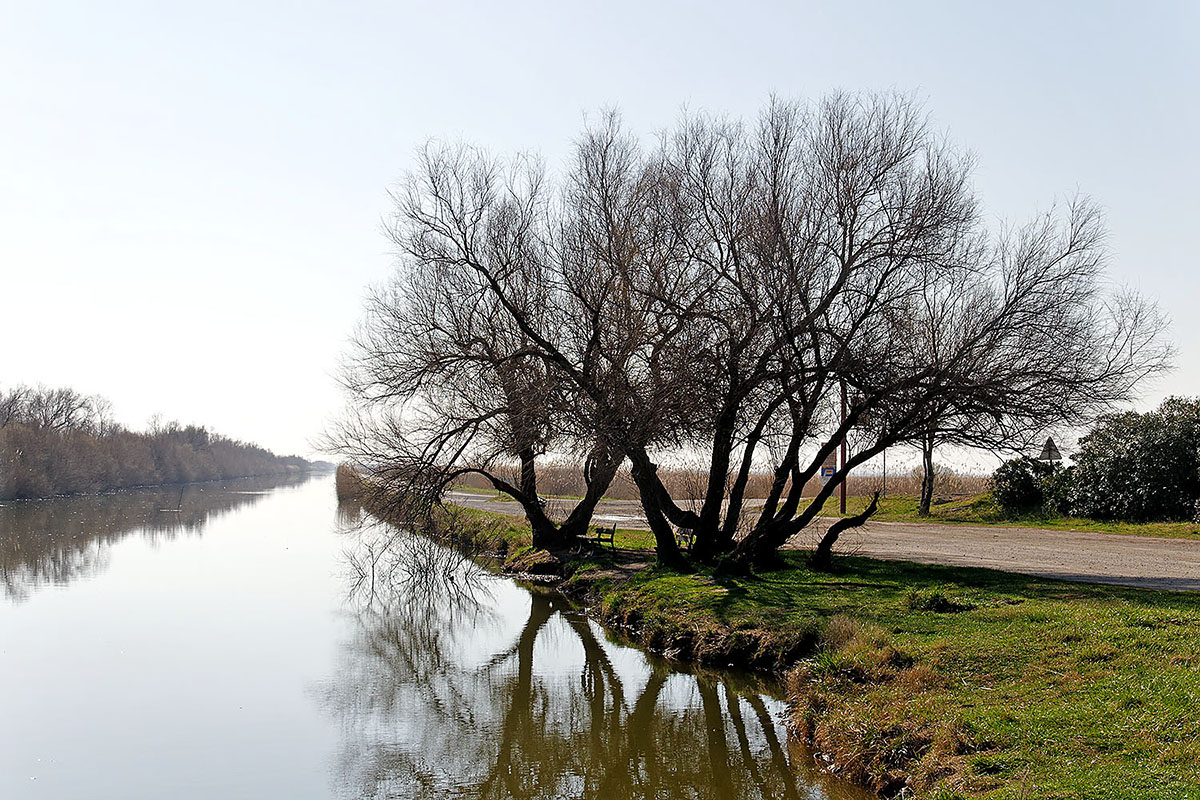
Canal view near Gallician
Click on any image to see a larger (1500 x 1000 pixel) version!
On Saturday, March 14, 2009, my buddy Didier and I went on a photo excursion to the Camargue, western Europe's largest river delta. It lies between the two arms of the Rhône river and the Mediterranean sea. A good third of the over 930 square kilometers (roughly 360 square miles) is taken up by étangs (literally ponds, or small lakes, but in this case lagoons of extremely salty water) and marshes. The Camargue is home to over 400 species of birds, including flamingos and herons; in addition, the area is famous for the Camargue bull and the Camargue horse. We began our tour south of the small village of Gallician, parking the car at the intersection of two canals. For those who would like to look up the exact place in Google Earth, the coordinates are 43°38'15.86"N, 4°17'55.49"E.
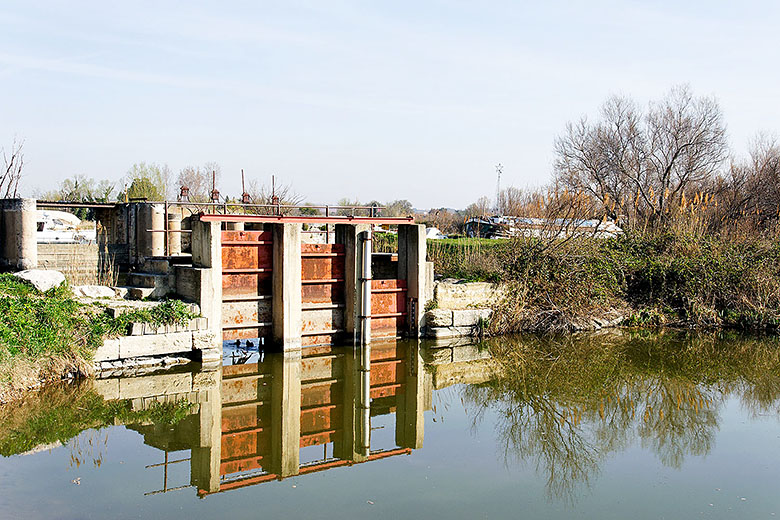
|
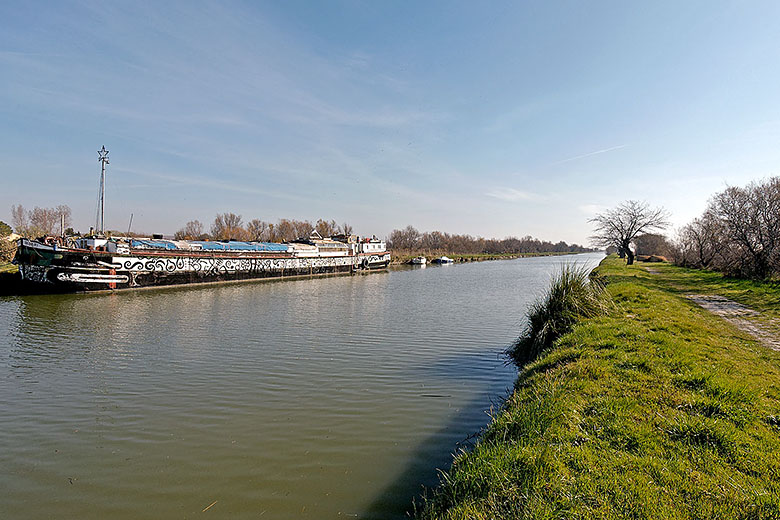
|
Sluice gates |
The larger of the two canals |
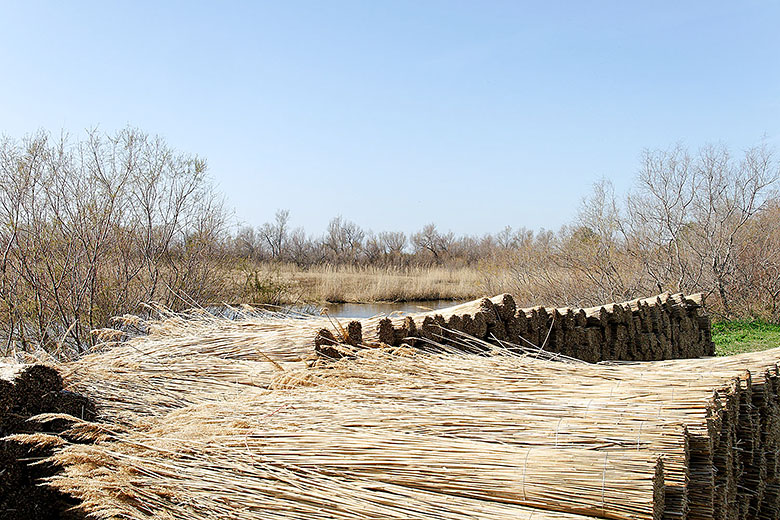
|
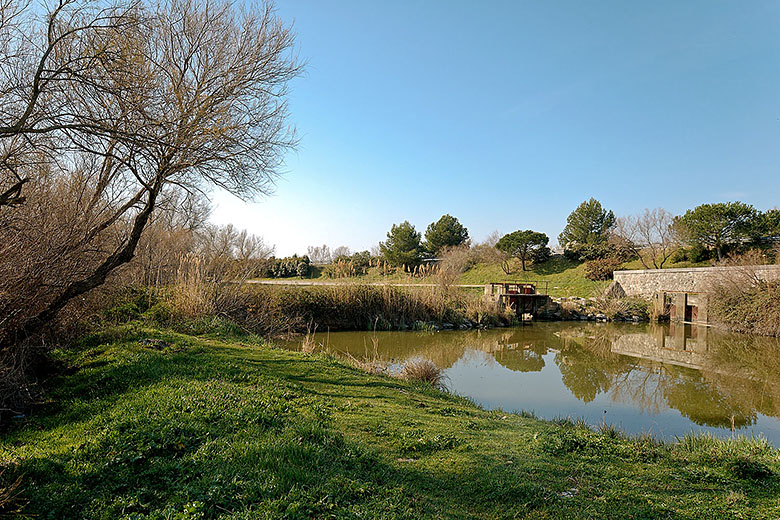
|
Thatch sheaves |
Between the two canals |
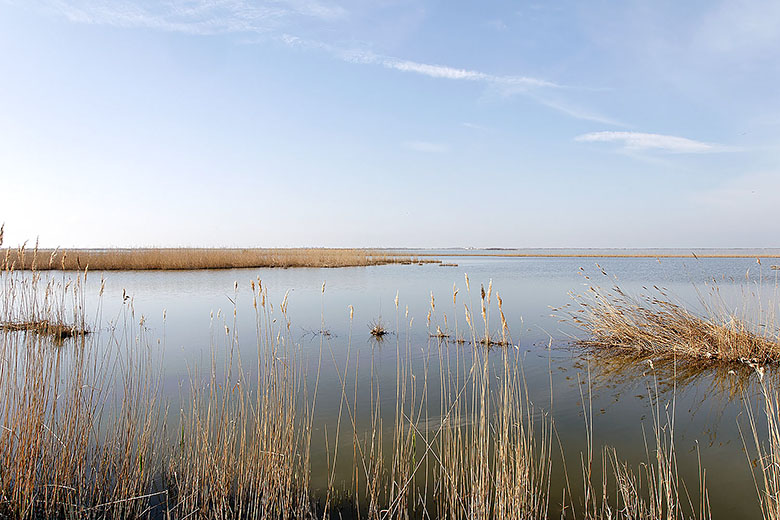
|
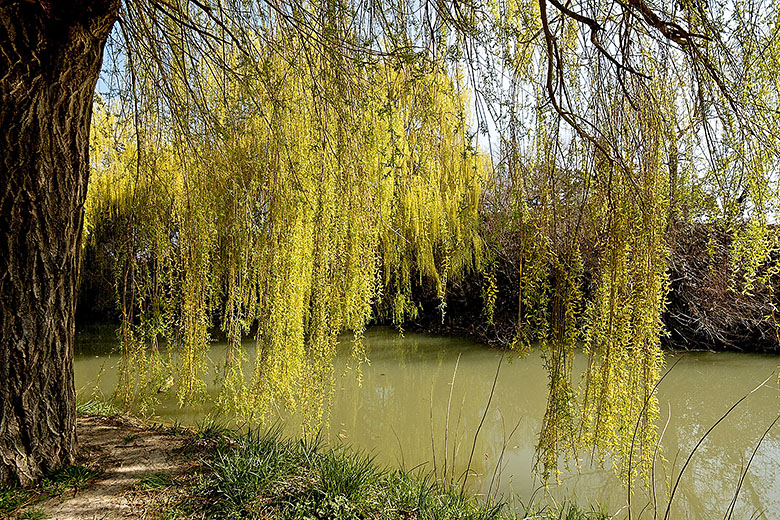
|
Etang du Charnier |
Weeping Willow |
Our next stop was the Centre de découverte du Scamandre from where one takes the Sentier de la fromagère, the (female) cheese-maker's footpath (so named because apparently people used to breed sheep here), to tour de nature preserve of Buisson-Gros, and area of some 215 hectares, or roughly 530 acres. There is also a boardwalk that leads to a bird observatory, a space enclosed in reeds with openings through which one can observe the animals without being seen. On the way back from the observatory, I thought I spotted something across the pond. Didier and I both looked through our telephoto lenses: no doubt, a beautiful heron! Stealthily, we approached the bird hoping to get a photo from up close. We got suspicious when the creature didn't move; it was Didier who first realized that it was fake!
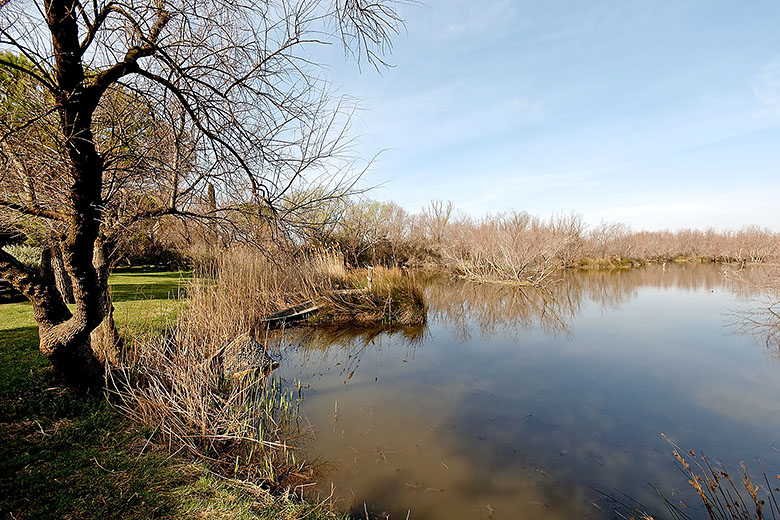
|
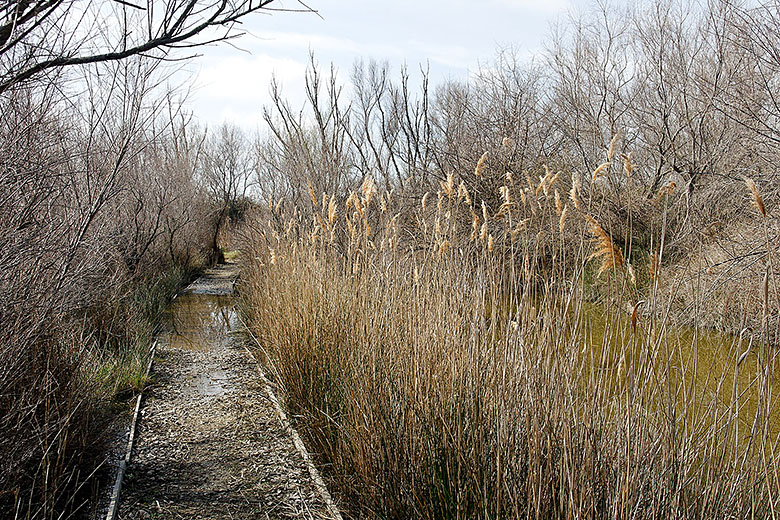
|
The beginning of the walk |
Boots would have come in handy! |
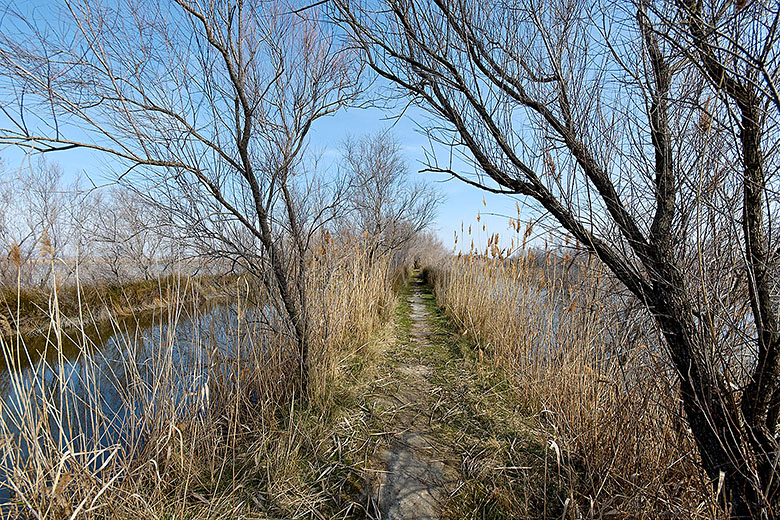
|
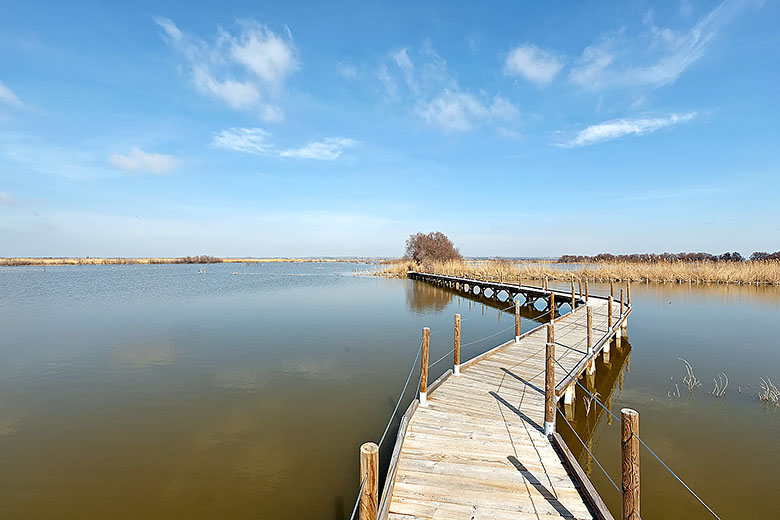
|
Water on both sides |
The boardwalk |
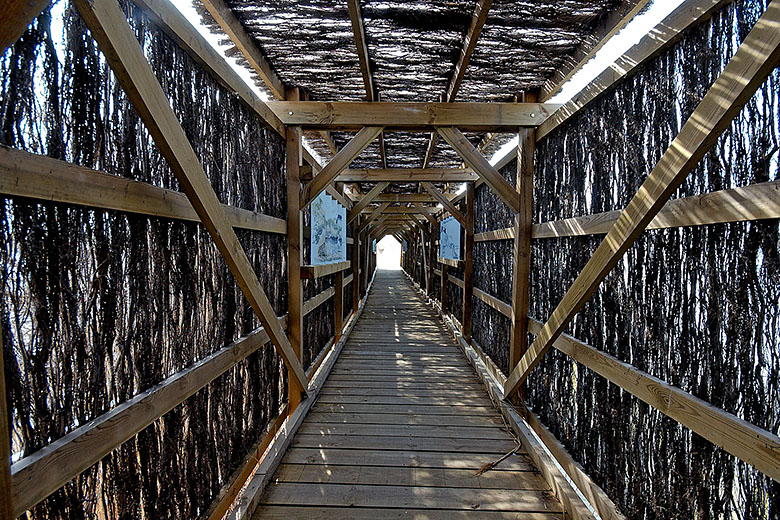
|

|
In the observatory |
Not too many birds around... |

|

|
Not a heron, as we found out |
Continuing our walk |
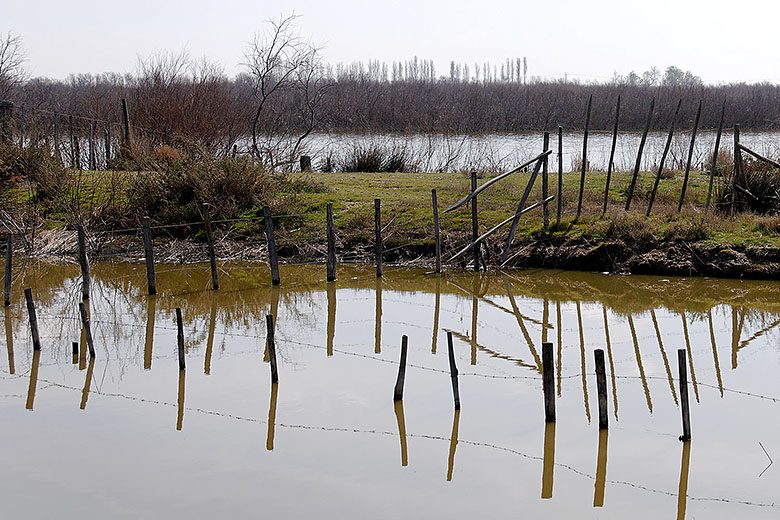
|
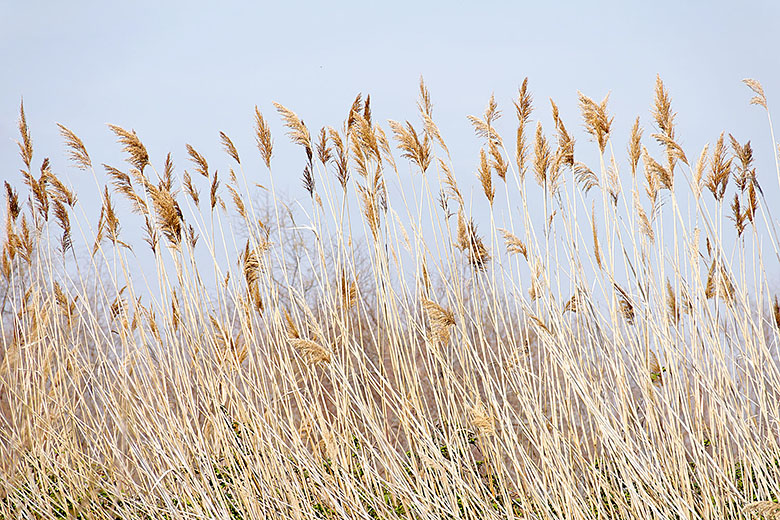
|
Wetlands |
Reeds |
As I hope you will agree, this nature preserve is magnificent, and the beauty of the landscape made up for the paucity of the wildlife we had encountered up to that point (this was to change later in the day). For now, we were quite happy to follow the cheese-maker's trail and admire the scenery. By the way, this area is open to the public Wednesday through Saturday from 9 AM to 6 PM. Access is free of charge but controlled; this means that one has to go through a registration desk and answer a couple of questions for statistical purposes. For example, we were asked if this was our first visit and what postal code we came from.
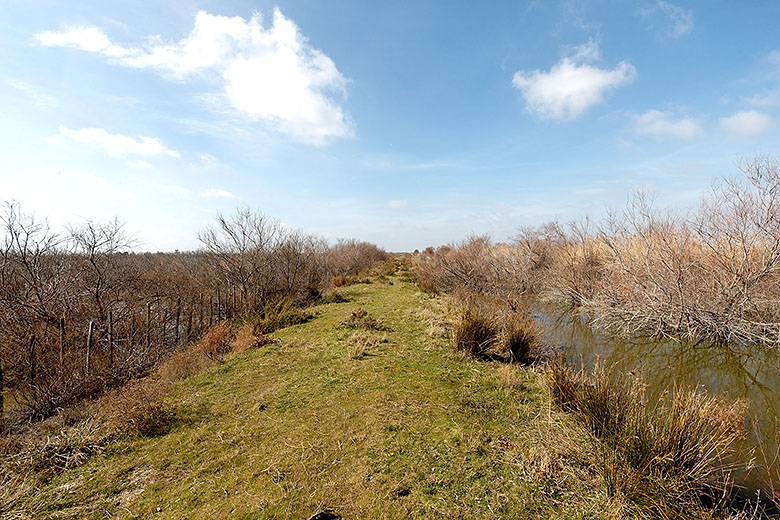
|

|
One is never far from water |
Rice paddy |
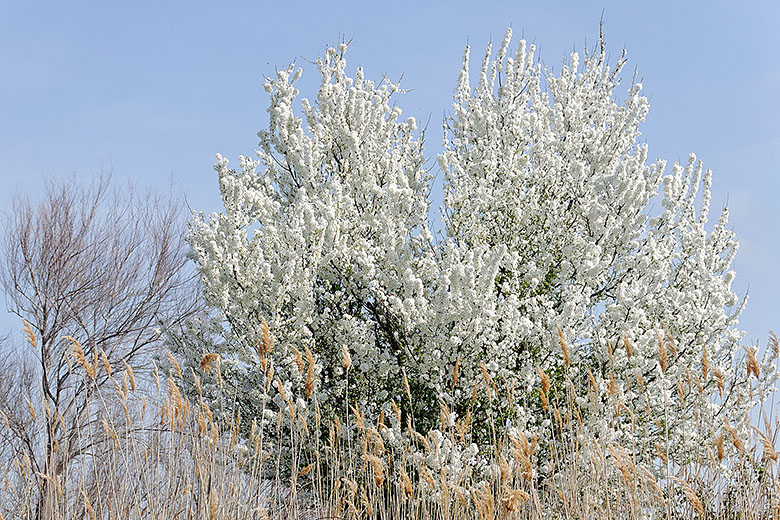
|
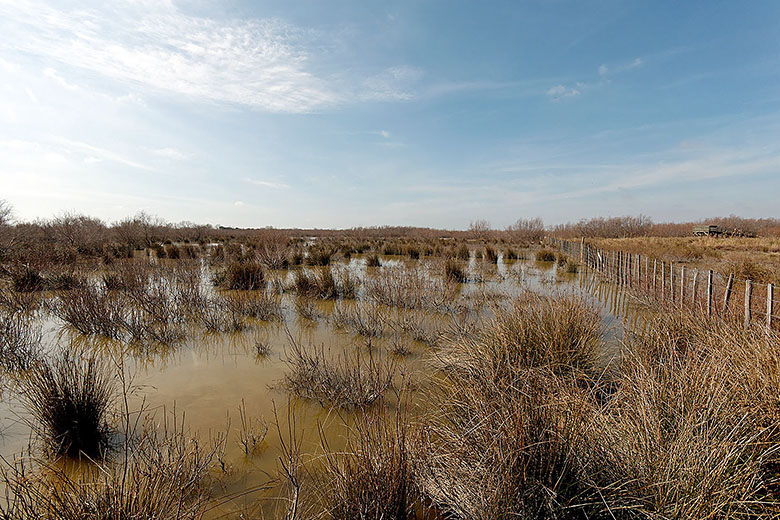
|
Tree in full bloom |
Marshland |

|
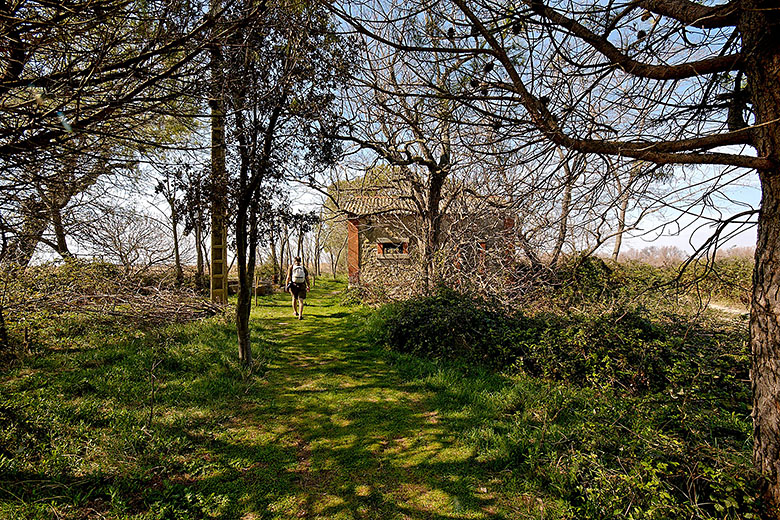
|
Camargue Bulls |
Heading back toward the entrance |
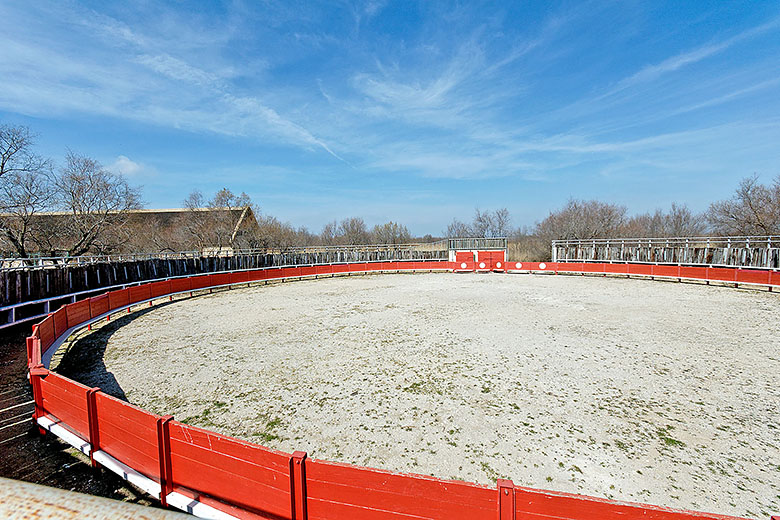
|
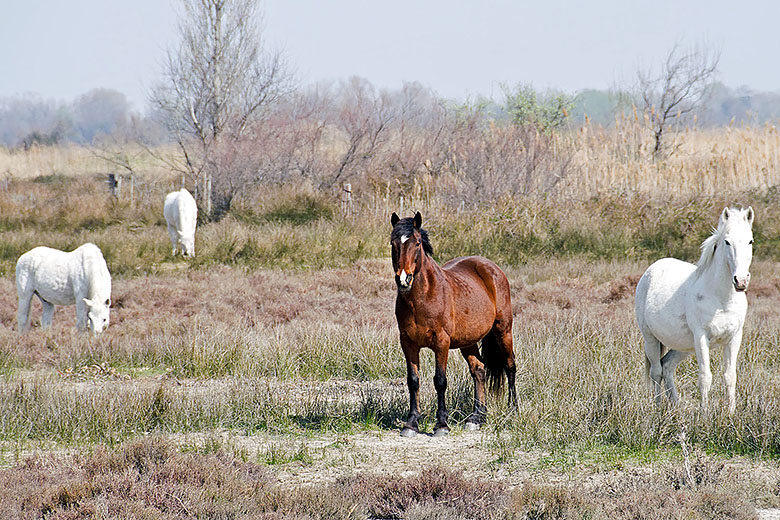
|
Arena |
Camargue Horses |
Les Saintes Maries... Why the plural? Because the town is named after three saints: Mary Magdalene, Mary Salome, and Mary Jacobe, the three women said to have been the first to witness the empty tomb following the resurrection of Christ. According to certain historical accounts, the three sailed from Egypt after the crucifixion and arrived in what is now the Camargue, either on purpose or by accident as shipwrecks. Relics of these three saints are kept in the town's church. Les Saintes-Maries-de-la-Mer is considered to be the capital of the Camargue; every year at the end of May, thousands of Roma Gypsies congregate here from all over Europe for their annual festival in honor of the dark-skinned Saint Sarah who is said to have traveled here with the three Marys and whose statue can be found in the church's crypt. The church is highly unusual; it is fortified, a mix of place of worship and fortress. After lunch, we climbed the narrow circular staircase to the top of the church from where one has a great view of the town and the Mediterranean. To visit the roof yourself, fire up Google Earth and fly to 43° 27.10' N, 4° 25.66' E.
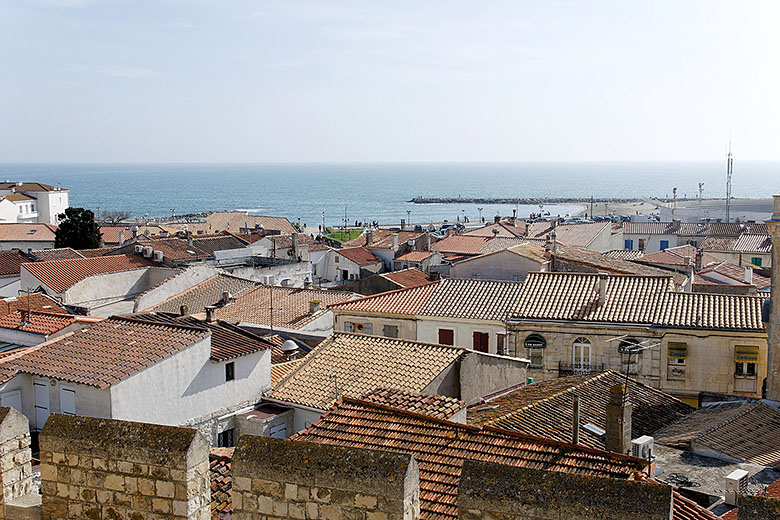
|
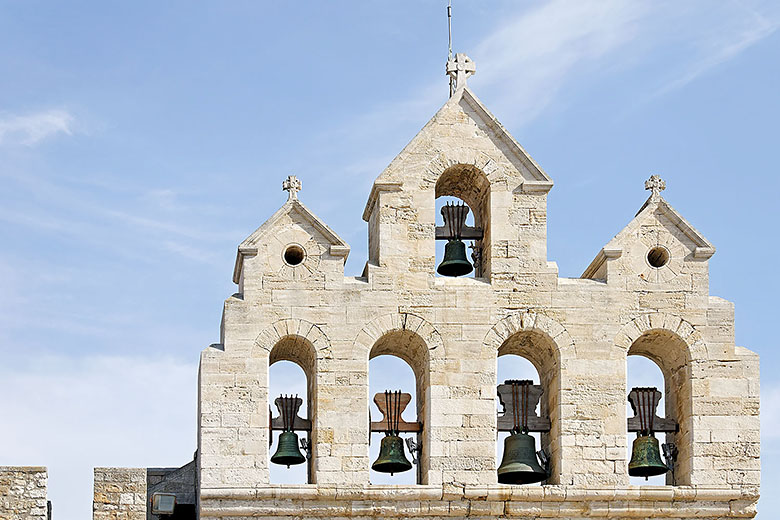
|
View to the south and the sea |
The unusual bell tower |

|
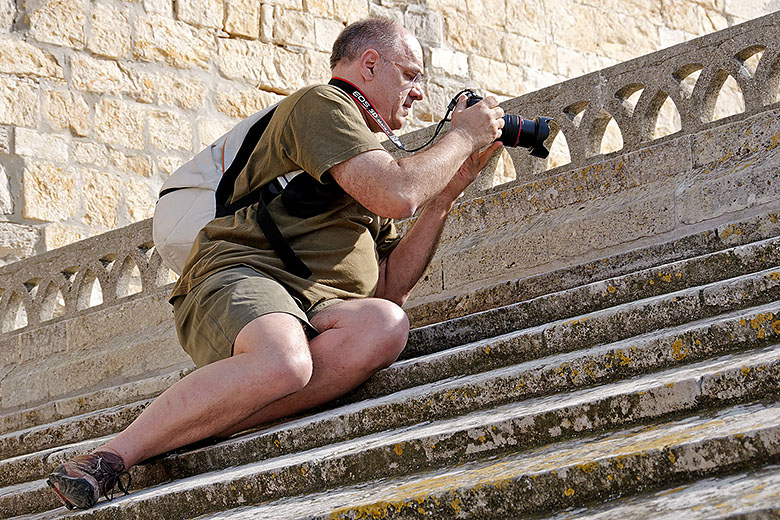
|
Local women |
Didier checking his last shot |
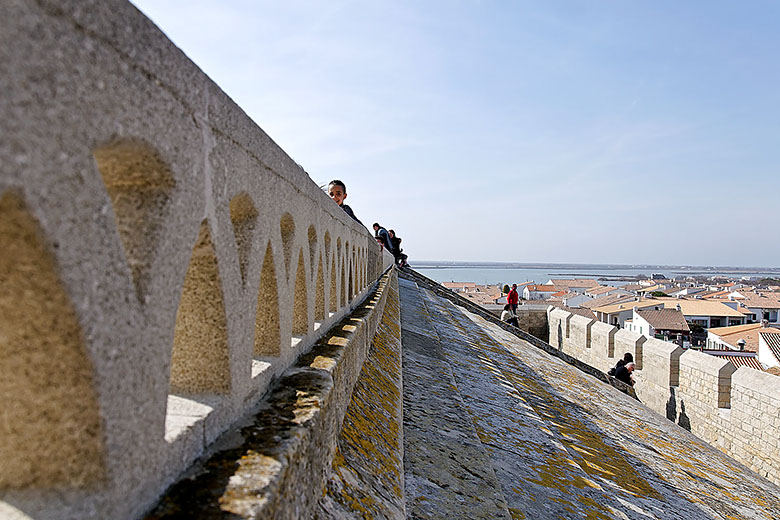
|
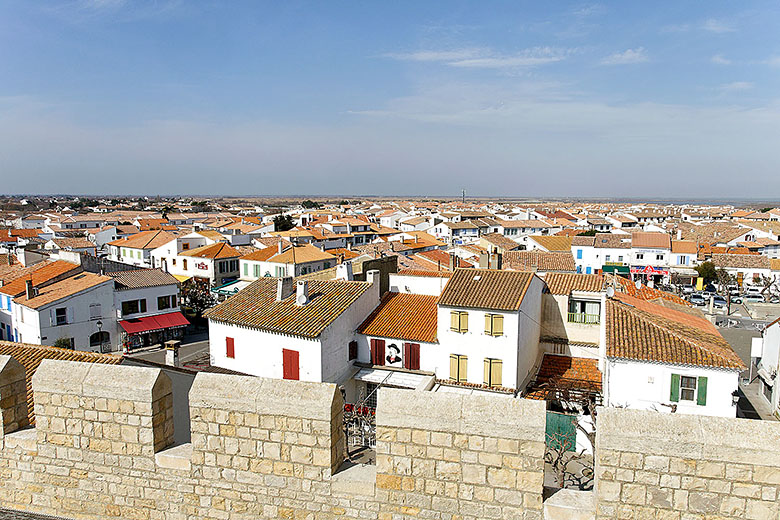
|
Looking along the very top of the roof |
View to the north |
Up to this point, we had still not seen many animals, so Didier, who knows the area inside and out, recommended a visit to the Pont-de-Gau bird sanctuary, a short distance to the north. This turned out to be an excellent suggestion; the Camargue's brine lagoons are one of the few natural habitats of the greater flamingo in Europe, and on this day, it seemed the entire flamingo population had gathered in this one place. There was quite a bit of commotion because we had arrived in the middle of the flamingo mating season, so we got to observe the courtship rituals. As always, the males are showing off and the females pretend not to be impressed. The whole thing is accompanied by an incessant honking and cackling. If your browser supports it, a sound control will appear below the next few rows of photos; activate it to listen to the flamingos! You may also watch a small video clip of the flamingos, taken with my Canon SD600 point and shoot camera.
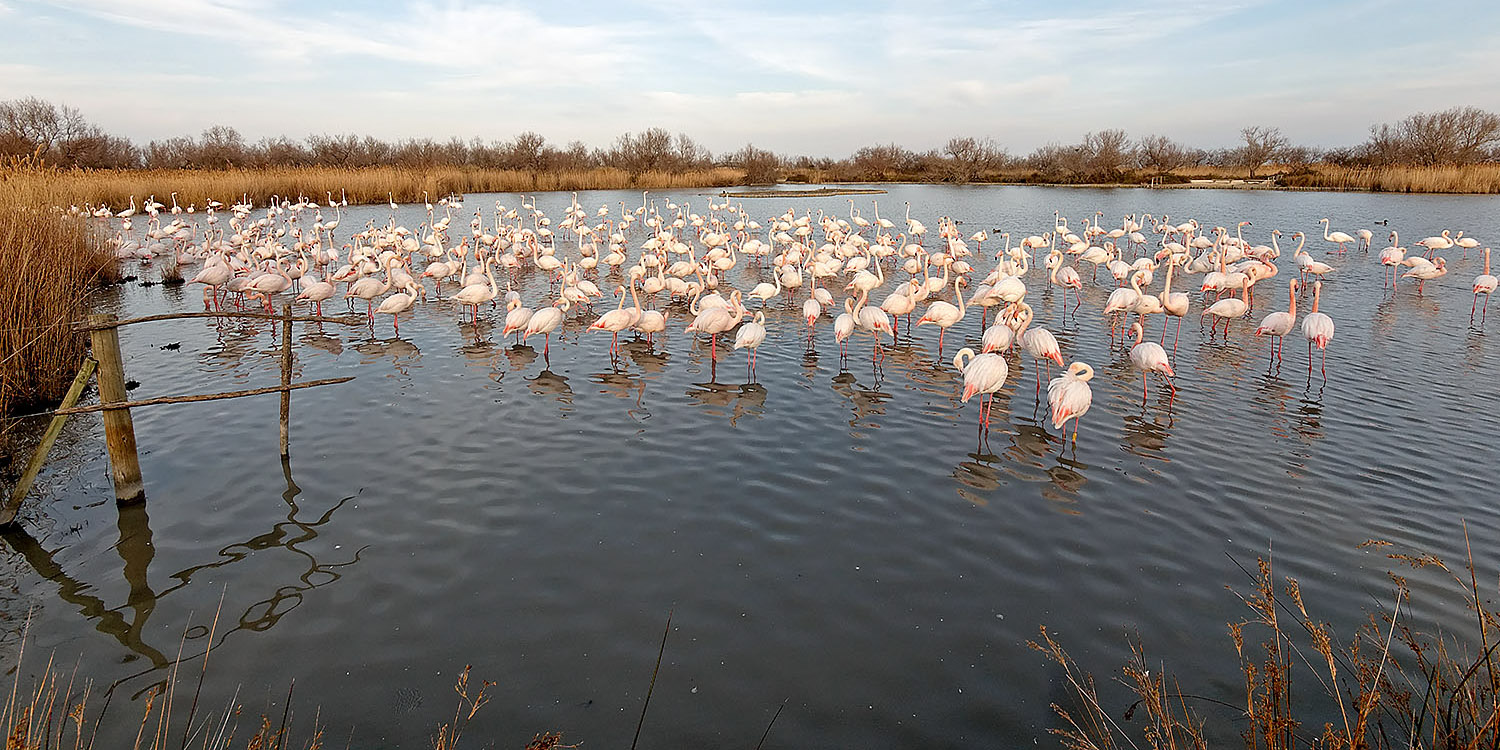
|
Flamingos |
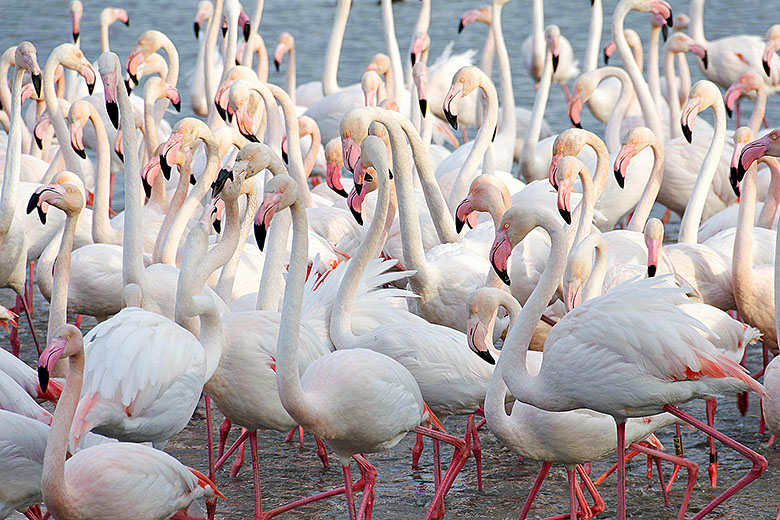
|

|
A closer look... |
...and closer still |

|
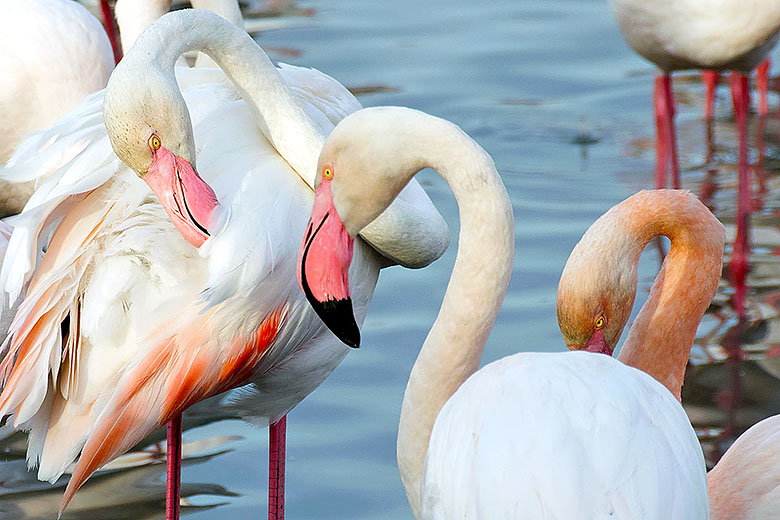
|
Listen up, gals! |
Preening |
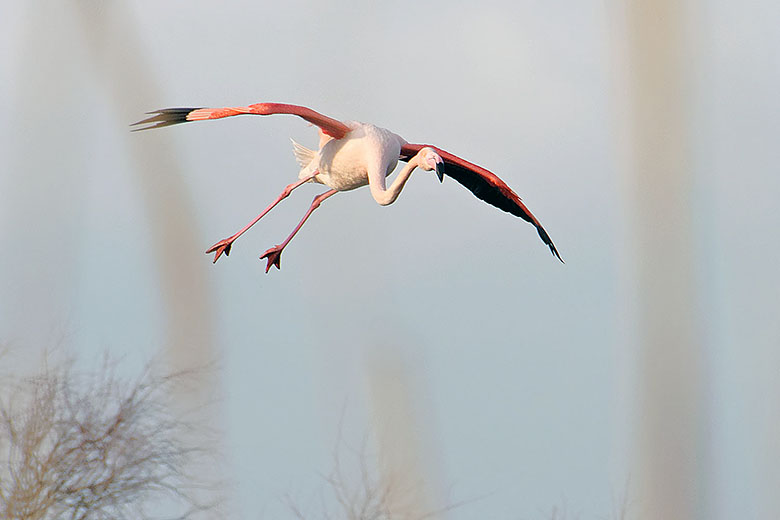
|
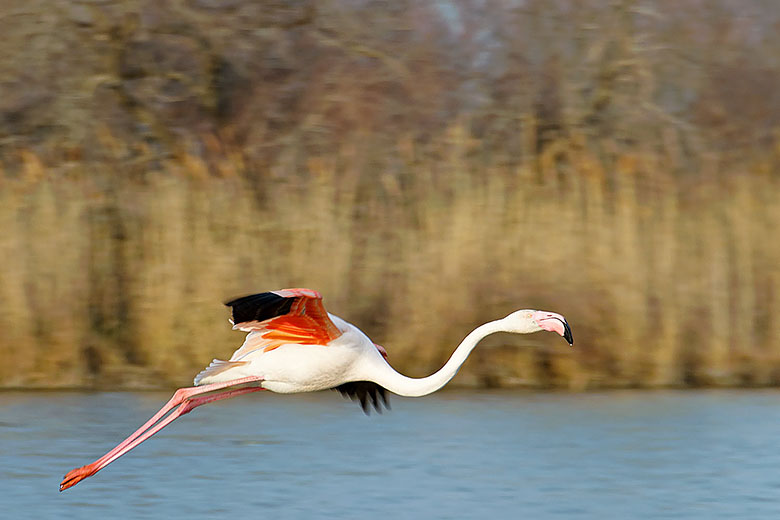
|
Only two seconds between this... |
...and the imminent landing |
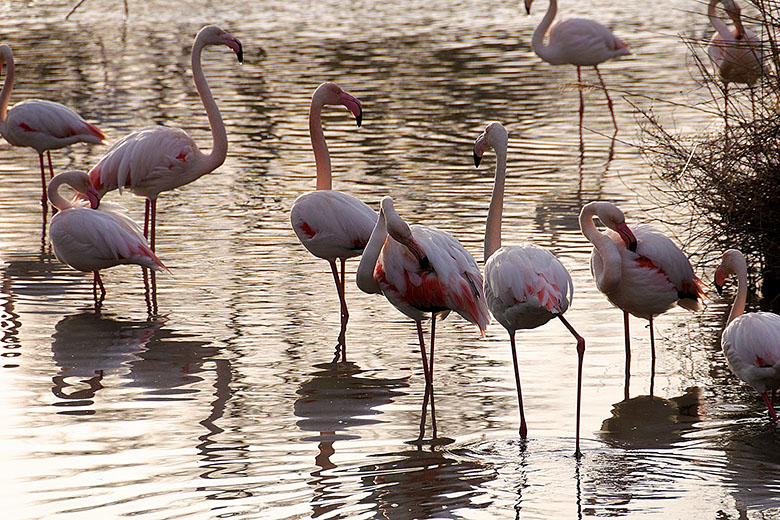
|
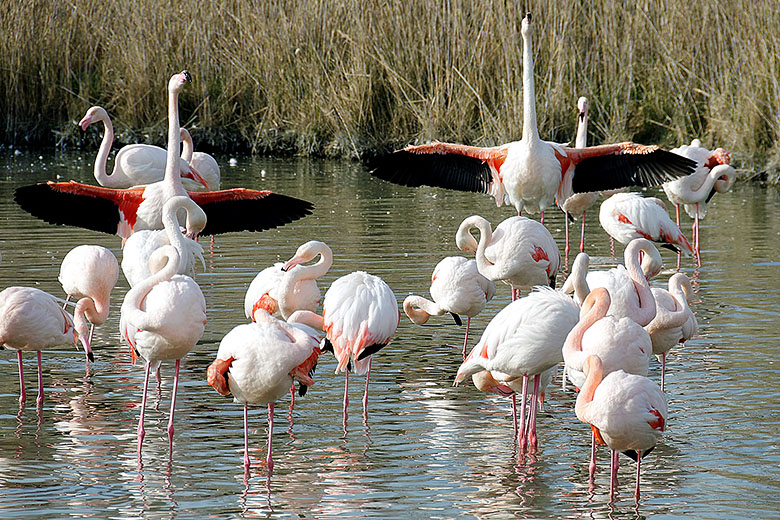
|
contre-jour |
The males are showing off again |
Even though flamingos were clearly the main attraction, there were other birds, such as herons (busy making nests, so the chicks can't be far off), egrets, an amazing variety of ducks, and many birds that eluded identification. It was already getting late when we left the sanctuary; across the street, we noticed a few Camargue horses, so we stopped for a last photo session. On the way back to Aix-en-Provence, where I had left my car, we crossed the Grand Rhône, the wider of the two parts of the river that form the Camargue delta on the Bac de Barcarin, a most convenient ferry given that there are no bridges for several miles in either direction. The last photo on this page is of the Grand Rhône as seen from the ferry.
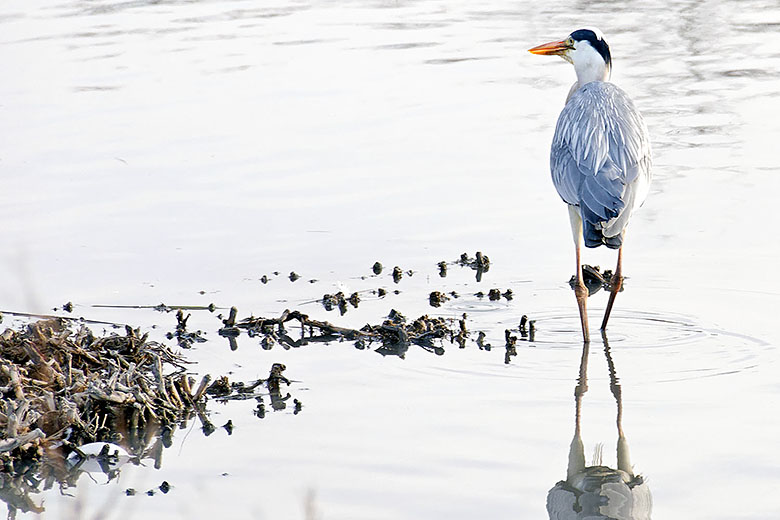
|

|
Heron (real, this time!) |
Heron with nesting material |

|
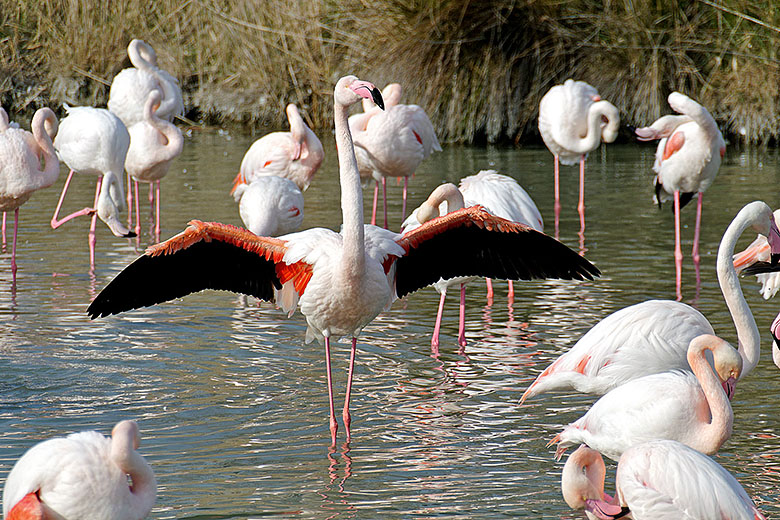
|
Nesting herons |
Will someone please look at me? |
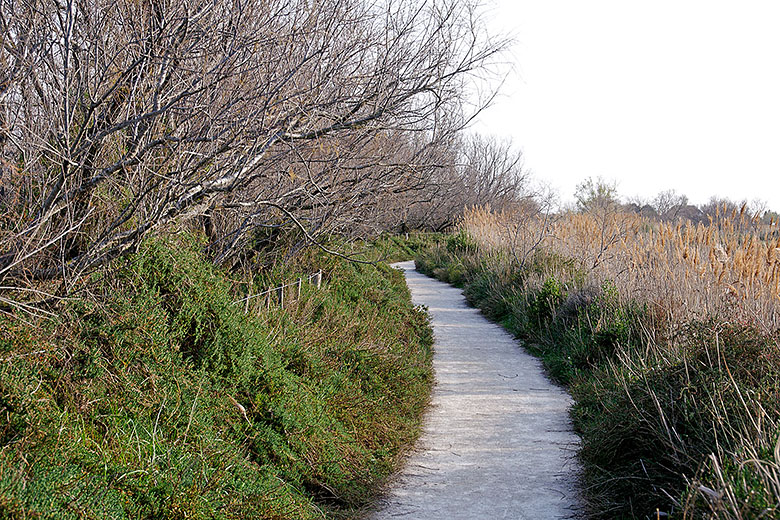
|
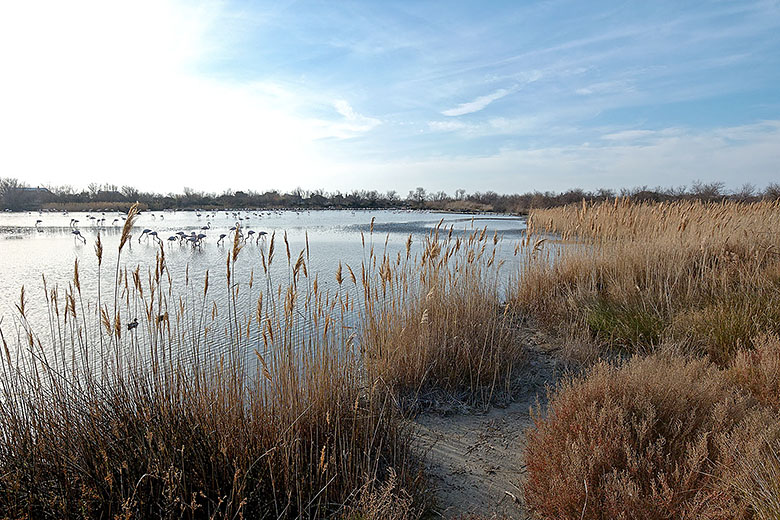
|
Following the path around the pond |
View over the main pond |
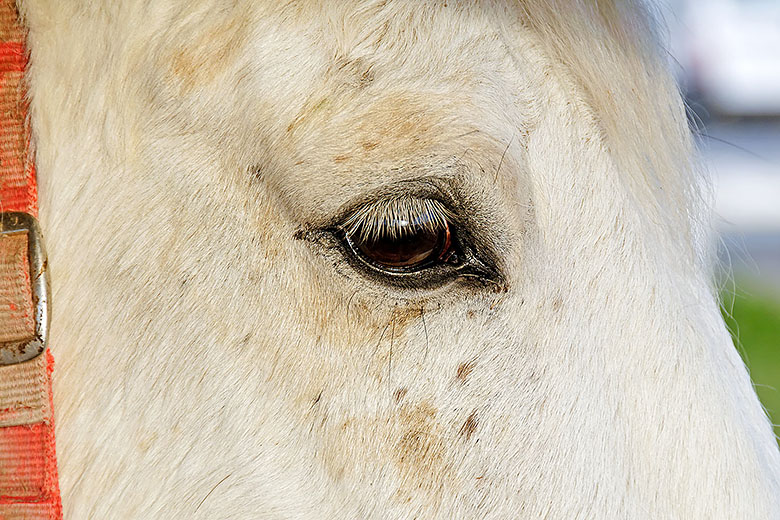
|
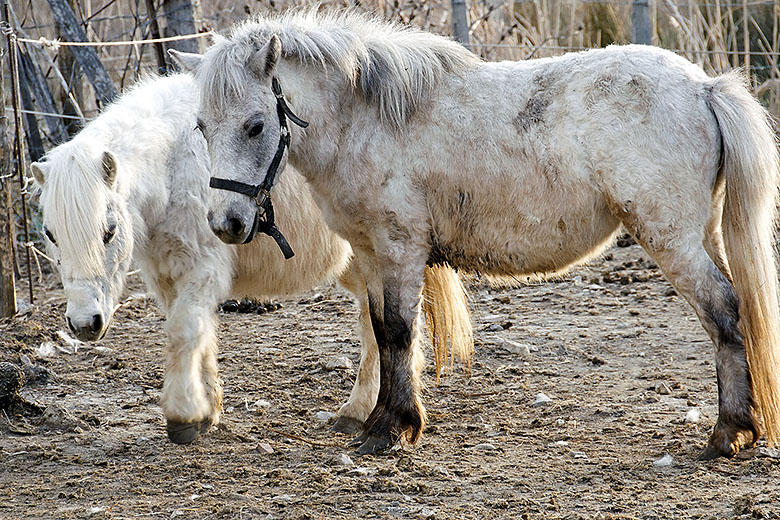
|
Killer eyelashes |
Ponies |

|
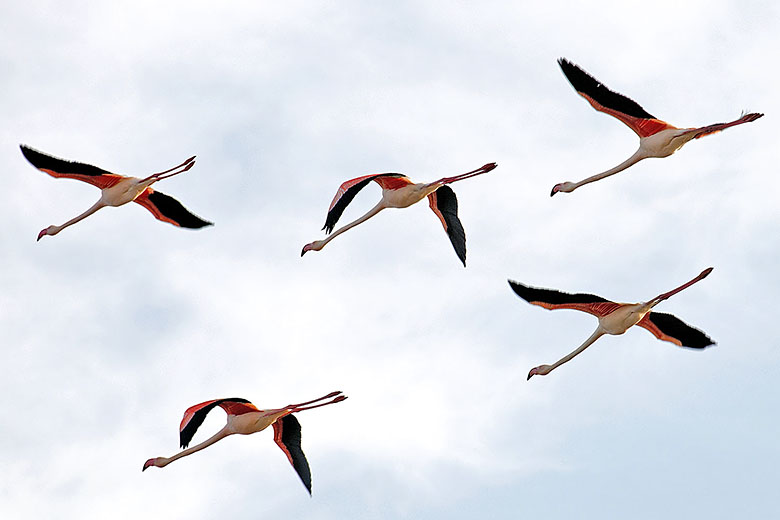
|
Camargue Horse |
One flamingo formation... |
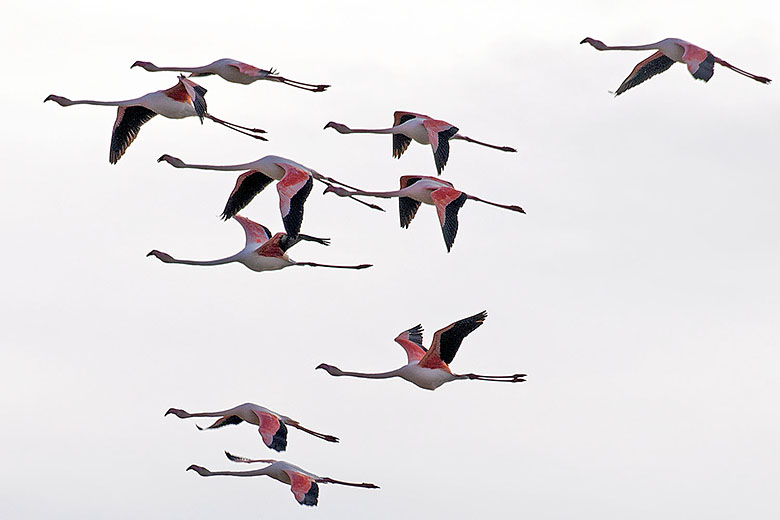
|
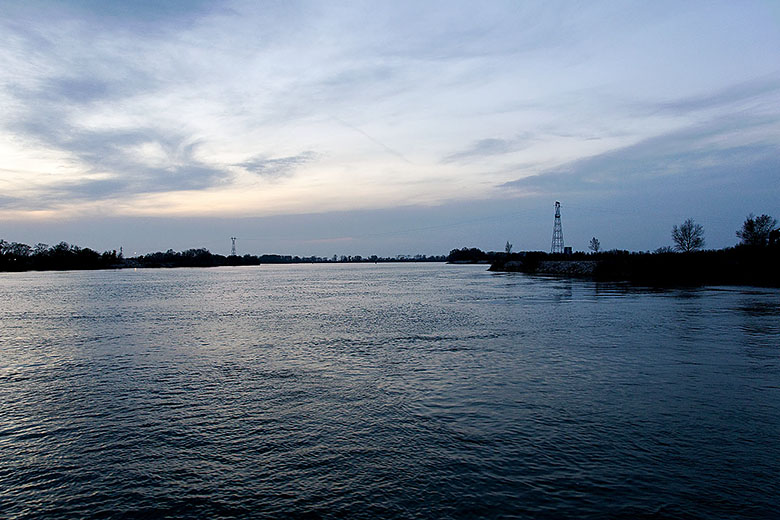
|
...and another one |
View from the Bac de Barcarin |
For those who are interested in this sort of thing, the photos on this page were all shot in Raw with a Nikon D300 equipped with a Nikkor 18-200mm VR lens and a Nikon D70 fitted with a Sigma 10-20mm wide angle lens. In 35mm photography parlance, these correspond to 27-300mm and 15-30mm zoom lenses, respectively. The raw conversion was done with Optics Pro software from DxO, with subsequent additional tweaking in Adobe Photoshop CS4. The full EXIF info is embedded in the photos; data such as shutter speed, aperture, and so on, can thus easily be obtained by means of any EXIF reader. The sound of the flamingos was captured with my iPhone. Finally, a subset of the photographs on this page is available for viewing in one of our public galleries.
I hope you enjoyed this virtual trip to a small portion of the Camargue. As for me, I will definitely have to go back. For anyone who enjoys nature, landscapes, animals, photography, or better still, all of the above, this is an absolutely must-see destination.
NOTE: I did, in fact, go back three years later. Photos from that visit are available on this page.
Home | Site Info | Family | The Area | Trips | France | Work | Rants | Photography | Odds & Ends
This page was last modified on October 7, 2012
Send feedback about this page to feedback@kiechle.com
https://www.kiechle.com/trips/camargue/index.htm
(optimized for Retina display)
All contents © 1999-2025 The Kiechles